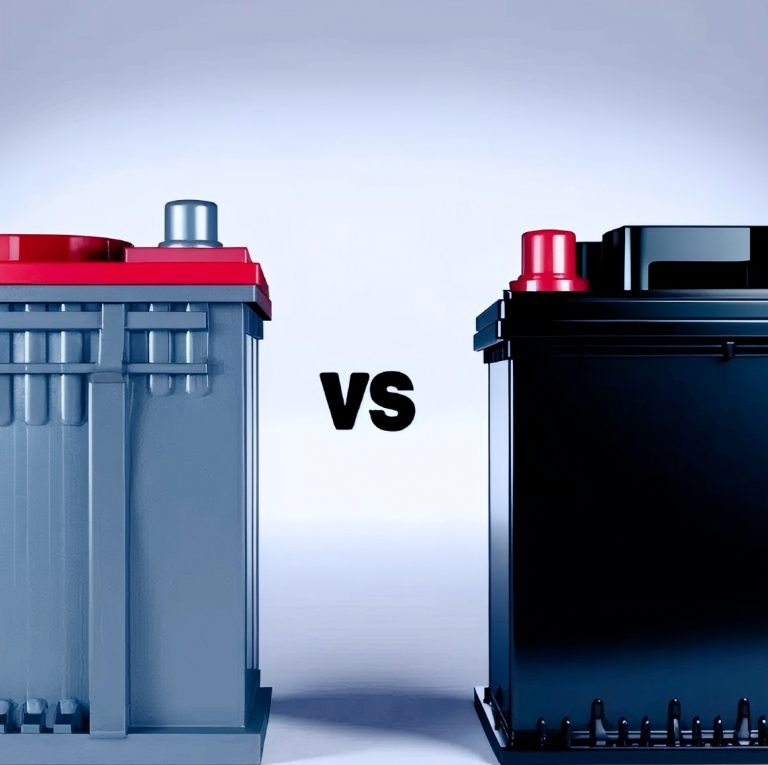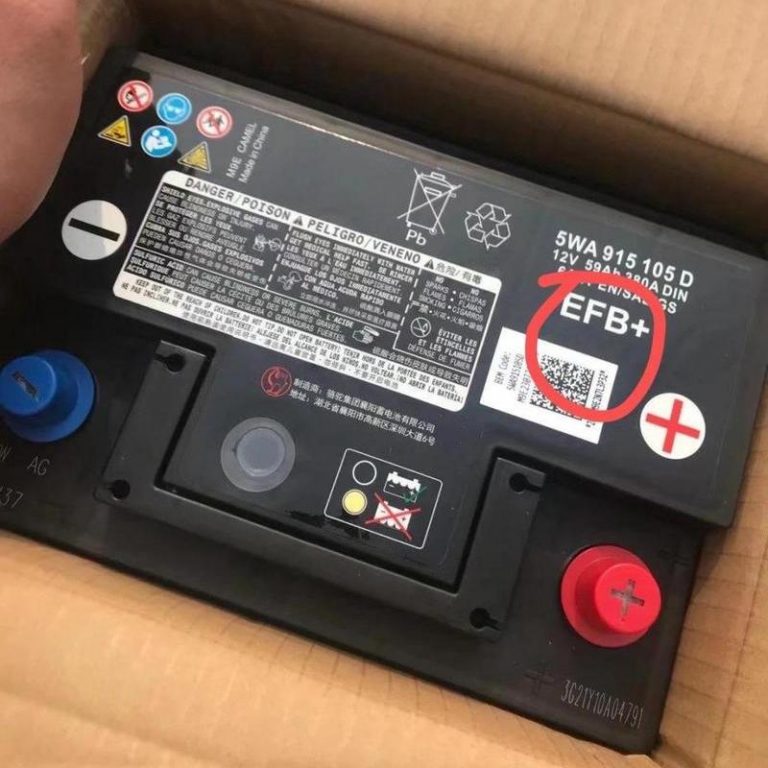Battery Water: A Complete Guide to Watering Lead-Acid Batteries
What is Battery Water? What Role Does It Play in Lead-Acid Batteries?
Battery Water refers to deionized or distilled water used in lead-acid batteries. Its primary function is to combine with sulfuric acid to form an electrolyte, enabling chemical reactions that store and release electrical energy.
Inside a lead-acid battery, the electrolyte mainly consists of sulfuric acid (H₂SO₄) and water (H₂O). During charging and discharging, water gradually breaks down into hydrogen and oxygen gases, causing the liquid level to drop. If the level gets too low, the battery plates may be exposed to air, leading to sulfation, battery damage, and a shorter lifespan. Therefore, regularly checking and refilling the battery water is a crucial maintenance step.

How High to Fill Water in a Battery?
When refilling, the water level should be just right—neither too high nor too low—as both extremes can affect battery performance. Here is the correct water level reference:
- Ideal Water Level: The water should just cover the top of the battery plates but should not exceed about 1/4 inch (6 mm) below the fill port.
- Too Low: If the water level is below the top of the plates, they will be exposed to air, leading to oxidation and sulfation, which damage battery life.
- Too High: If overfilled, the water may overflow during charging, causing corrosion or short circuits.
Steps to Add Water
- Check the water level: Open the battery caps (for maintainable batteries) and inspect the level.
- Add water to the proper height: Use distilled or deionized water and pour it in slowly, ensuring that each cell is filled evenly up to the top of the plates.
- Avoid overfilling: Do not fill to the overflow point, as the electrolyte expands during charging.
- Close the battery caps securely to ensure proper sealing.
Will Adding Water to a Battery Fix It?
If a battery is underperforming solely due to low water levels, refilling it may partially restore its function. However, if the battery has suffered severe sulfation, aging, or short circuits, adding water alone will not fix the problem.
Situations Where Adding Water Helps:
- If the battery has lost water due to evaporation, refilling can restore normal operation.
- If the battery voltage is low but not entirely dead, adding water and charging it properly may help recover some performance.
Situations Where Adding Water Won’t Help:
- Severe Sulfation: If thick layers of lead sulfate crystals have formed on the plates, adding water won’t fix the issue.
- Aging Battery: Lead-acid batteries typically last 3-5 years. Once past their lifespan, refilling water won’t restore them.
- Short Circuits or Plate Damage: If the battery has internal shorts or corroded plates, water won’t be a solution.
Conclusion: Adding water helps maintain a battery but cannot fix all problems. If a battery still won’t charge or function after refilling, replacement may be necessary.
Do You Need to Add Water to a Car Battery?
This depends on the type of car battery:
- Sealed Maintenance-Free Batteries: These are designed to be sealed and typically do not require water refilling.
- Maintainable Lead-Acid Batteries: These require water refilling if evaporation causes the electrolyte level to drop.
How to Tell If Your Car Battery Needs Water?
- Check the Water Level: Open the battery caps and see if the level is below the top of the plates.
- Signs of Weak Battery Performance: Difficulty starting the car or reduced voltage may indicate low electrolyte levels.
- Reduced Bubbling During Charging: If little to no bubbles form while charging, the battery may need water.
When Should You Add Water to a Battery?
Best Times to Add Water
- After Charging: Charging causes water evaporation and electrolyte expansion, so checking levels after charging gives a more accurate reading.
- Regular Inspections: Check water levels every 1-2 months, especially in hot climates.
- Whenever the Level Drops Too Low: If the electrolyte level falls below the top of the plates, add water immediately.
When Not to Add Water
- Before Charging: Adding water before charging may cause overflow when the electrolyte expands.
- During Extreme Temperatures: Avoid refilling in freezing conditions (below 0°C) or excessive heat (above 40°C) to prevent performance issues.
How to Add Water to a Battery?
Tools Needed
- Distilled or Deionized Water (Do not use tap water, as minerals can damage the battery)
- Safety Gloves and Goggles
- Plastic Funnel or Battery Watering Bottle
Step-by-Step Instructions
- Turn Off Power: Ensure the battery is disconnected from any circuit.
- Open the Battery Caps (for maintainable batteries).
- Check the Water Level: Identify cells that need refilling.
- Slowly Add Water: Use a funnel or watering bottle to fill each cell to the proper level.
- Close the Caps and wipe off any spilled liquid.
- Charge the Battery and check if it returns to normal voltage.
What is the Difference Between Adding Distilled Water, Electrolyte, and Battery Reconditioning Fluid to a Lead-acid Battery?
Distilled Water:
- Used only to replenish water lost due to electrolysis and evaporation, maintaining the proper electrolyte concentration.
- Free of minerals and impurities, ensuring no interference with the battery’s chemical reactions.
- Essential for routine maintenance to keep the battery functioning properly.
Electrolyte (Sulfuric Acid Solution):
- A mixture of sulfuric acid and water, typically with a specific gravity of around 1.27-1.30.
- It should only be added during initial battery filling or after a significant electrolyte spill.
- It Should not be added to a regularly used battery, as it may increase acid concentration and shorten battery life.
Battery Reconditioning Fluid:
- Marketed as a solution to dissolve sulfate buildup and restore battery performance.
- Effectiveness varies; it may provide short-term benefits for some batteries but could harm long-term battery health.
- Generally not recommended, especially for aged or damaged batteries, as the benefits are often limited.
For routine maintenance, only distilled water should be added. Electrolyte should not be added unless necessary, and reconditioning fluids are generally not advisable unless tested and verified for a specific battery condition.
Frequently Asked Questions (FAQs)
Q1: Can I use tap water instead of distilled water?
No. Tap water contains minerals and impurities that can cause buildup on the battery plates, reducing efficiency and lifespan.
Q2: How soon can I use the battery after adding water?
It is recommended to charge the battery after refilling, allowing the electrolyte to mix properly before use.
Q3: How often should I add water to my battery?
It depends on usage and climate. Typically, check every 1-2 months. In hot climates or frequent use, check monthly.
Q4: Can a battery be saved if it runs completely dry?
If the plates have dried out and been exposed for too long, the damage may be irreversible, and the battery may need to be replaced.
In The End
Proper battery watering extends battery life and improves performance. You should regularly check the water level, add distilled water when necessary, and follow the correct procedures. If a battery’s performance continues to decline despite proper maintenance, replacement may be the best solution.


















